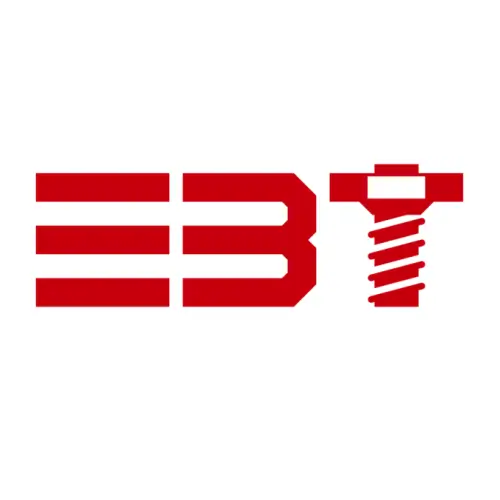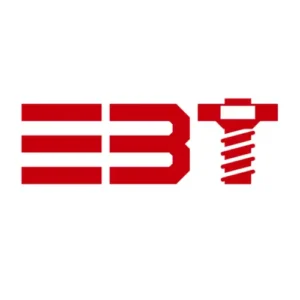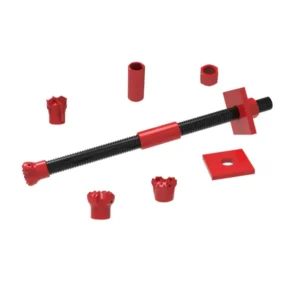With the accelerated urbanization process today, excavation support plays a critical role in construction projects, and its importance is undeniable. However, in the face of complex and variable geological conditions, especially in unstable and hard-to-drill strata, traditional excavation support technologies often face challenges such as high difficulty, high costs, and low efficiency. To address these issues, self-drilling anchor bolts have emerged as a solution, rapidly gaining prominence as a replacement for soil nails in excavation support, leading to a new wave of technological innovation in this field. This article explores the application of self-drilling anchor bolts in excavation support, highlighting their structural features, suitable geological conditions, and support effects, providing valuable insights for the readers.
Introduction to Self-Drilling Anchor Bolts
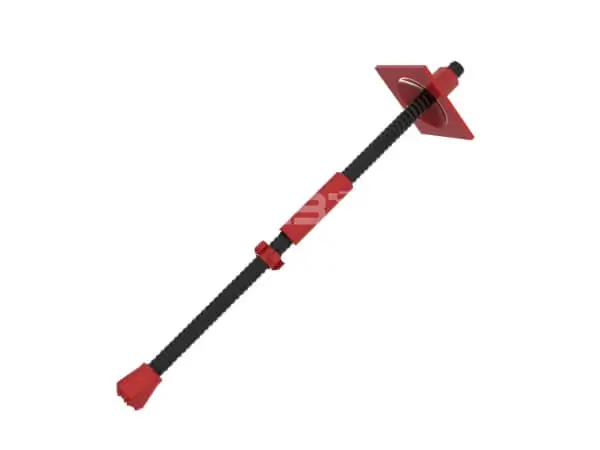
Self-drilling anchor bolts are a new support material that integrates drilling, grouting, and anchoring functions. They consist mainly of a drill bit, anchor bar, centralizer, coupler, plug, plate, and nut. The anchor bar is made of alloy materials with threads on its surface to ensure a strong bond with the grouting material. Various drill bits, such as “button drill bits” and “cross drill bits” are selected based on the geotechnical conditions to effectively break up the rock and soil, forming a slurry wall to reduce the risk of hole collapse during drilling.
The unique aspect of this anchor bolt lies in its simultaneous drilling and grouting construction process. During drilling, high-pressure grout is injected through the anchor bar’s internal passage into the surrounding drilled area, strengthening disturbed rock and soil and effectively expanding the anchor’s diameter, thereby improving the support effect. This process significantly enhances construction efficiency while also lowering overall construction costs.
Structural Features and Advantages of Self-Drilling Anchor Bolts
- Structural Features: The self-drilling anchor bolt is expertly designed, with each component serving a specific purpose. The drill bit breaks up the rock and soil and comes in different types, such as clay bits, hardened cross-cut drill bits, tungsten carbide cross-cut drill bits, hardened button drill bits, and tungsten carbide button drill bits, to adapt to different geological conditions. The hollow anchor bar functions as both the grouting channel and the anchor body, constructed from an alloy material. The coupler and other components are designed to ensure stability during drilling, while the centralizer keeps the rod centered in the hole to avoid misalignment and suboptimal support. The plug prevents grout leakage, while the plate and nuts provide additional anchoring force that can be customized as needed.
- Wide Range of Formations: Self-drilling anchor bolts are effective not only in strata suitable for rebar anchors or anchor cables but also in loose, collapsible fill layers, gravel, and special strata influenced by groundwater. In these situations, the simultaneous drilling and grouting process enhances the performance of the bolts and provides effective support.
- Significant Anchoring Effect: By increasing the grouting pressure, the self-drilling anchor bolt can achieve high-pressure grouting and splitting effects, forming a strong bond between the anchor and the surrounding soil or rock, thereby increasing anchoring strength. Additionally, the full-length wave-shaped or trapezoidal threads on the rod body enhance the bonding with the cement grout, ensuring better grout encapsulation and improving support effectiveness.
- Good Stress Performance: The hollow anchor bar design offers better bending and shear resistance than rebar anchors of the same cross-section. Moreover, the factory-prepared production of the anchor bar ensures controllable quality, reduces the need for on-site processing, and improves construction efficiency and quality.
Application of Self-Drilling Anchor Bolts in Excavation Support
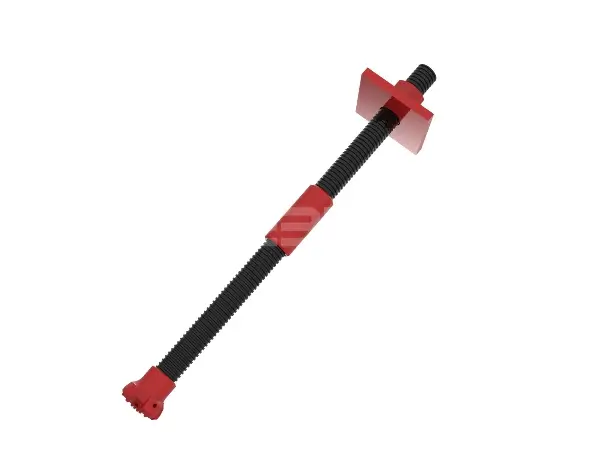
Taking a project in Huangshan as an example, the excavation has a depth of about 4.10 meters and a perimeter of approximately 160 meters. The surrounding buildings are dense, and the excavation side walls have a safety grade of level one. The geological conditions are complex, with multiple layers of rock and soil, including backfill, silty soil, gravel, strongly weathered shale, and moderately weathered shale.
Faced with such engineering challenges, the project team chose self-drilling anchor bolts as an alternative to soil nails for excavation support. Soil nail walls were used on the north and south sides, while the east and west sides used four rows of high-pressure jet grouting piles, one row of vertical self-drilling anchor bolts, and one row of horizontal anchor bolts for support. Groundwater control was established using dual-liquid grouting and a water barrier created by jet grouting piles.
During construction, the synchronized process of drilling and grouting self-drilling anchors is fully utilized. The slurry injection fluid is introduced into the drilling area through a channel in the anchor body, which helps reinforce the disturbed geotechnical materials promptly. Additionally, the mud wall formed during drilling effectively reduces the risk of hole collapse. Procedures such as lengthening the anchor and installing pads and nuts are conducted according to standardized protocols, ensuring quality and efficiency in the construction process.
After testing, the uplift resistance of the anchor bolts on the east and west sides of the excavation was completed. The results showed uplift resistance values between 100-140 kN, fully meeting the project’s required uplift capacity of 80 kN. Monitoring of the excavation top displacement indicated that the cumulative settlement of surrounding buildings ranged from 3-12 mm, and the cumulative horizontal displacement at monitoring points ranged from 2-9 mm, all within the alarm threshold of 30 mm. The rate of change did not exceed 3 mm/day, meeting design requirements.
Market Prospects and Promotional Value of Self-Drilling Anchor Bolts
With its unique structure and construction technology, the self-drilling anchor bolt has demonstrated significant market potential and promotional value in excavation support. The simultaneous drilling and grouting process improves construction efficiency and quality while lowering costs. It is especially beneficial in unstable strata prone to collapse or in conditions that are difficult to drill, where self-drilling anchor bolts provide significant advantages.
As urbanization continues and urban construction projects develop, the demand for excavation support technology will increase. Self-drilling anchor bolts, as a new type of support material and technology, will see growing market demand. As technology matures and application expands, production costs will decrease, and market competitiveness will increase.
In the future, self-drilling anchor bolts are anticipated to fully replace traditional rebar anchors in geotechnical anchoring applications. This shift is expected to advance excavation support technology and enhance the urban construction projects’ safety, efficiency, and sustainability.
Conclusion
Self-drilling anchor bolts, as an efficient and flexible support structure material, have shown remarkable advantages in excavation support, especially soil nails. Their integration of drilling, grouting, and anchoring functions simplifies the construction process, shortens the project timeline, and improves the stability and safety of excavation slopes with their excellent uplift resistance and load-bearing capacity. Moreover, their wide adaptability to complex geological conditions reduces the environmental impact, contributing to economic benefits. With ongoing technological progress and material optimization, self-drilling anchor bolts will have even broader application prospects in excavation support, contributing significantly to the sustainable development of civil engineering. Therefore, investigating and advocating for the use of self-drilling anchor bolts in excavation support is essential for enhancing underground space development technologies.
